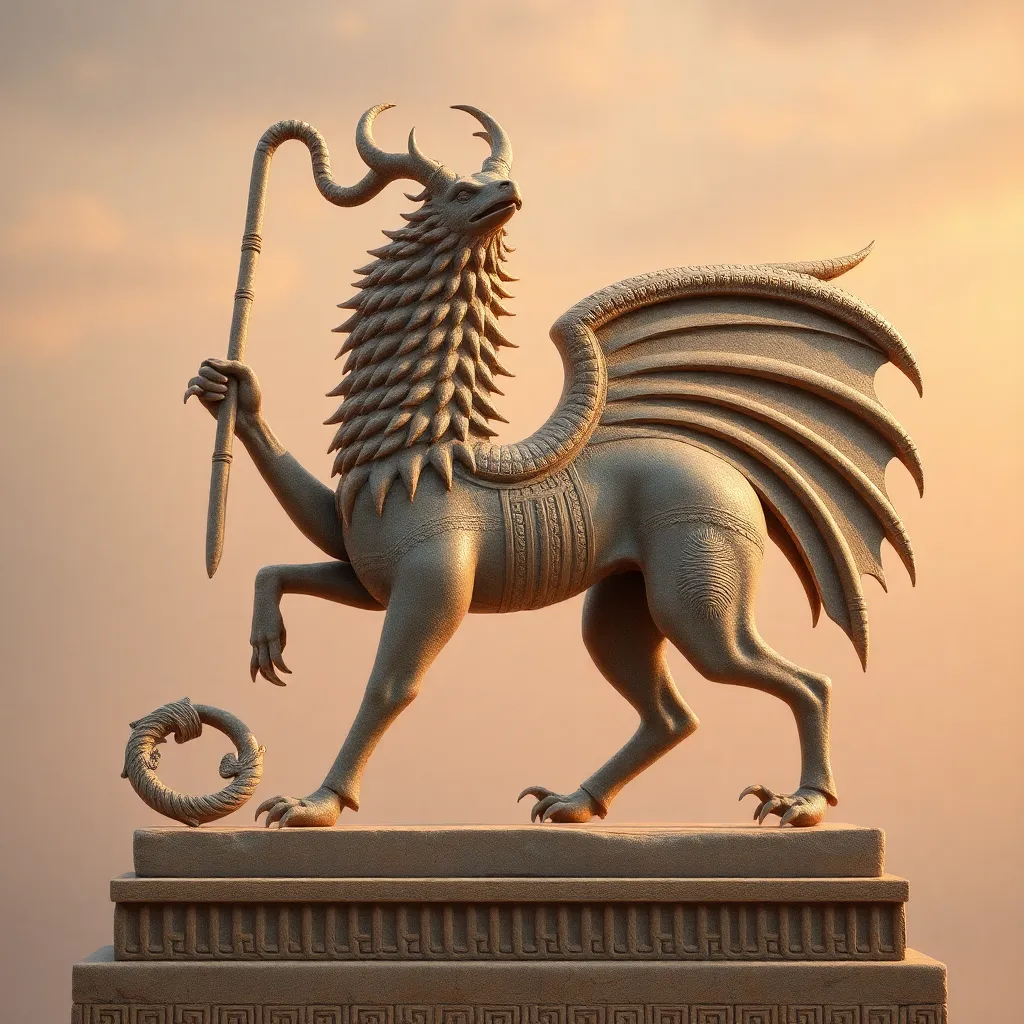The Role of Mythological Creatures in Greek Mythological Symbolism
I. Introduction
Greek mythology is rich with a diverse array of mythological creatures, each embodying unique attributes and symbolic meanings. These creatures are not merely fanciful beings; they serve as vessels for conveying complex themes and ideas central to the human experience. Understanding the symbolism associated with these creatures is essential for interpreting the narratives and lessons embedded in Greek myths.
This article delves into the origins, characteristics, and symbolic meanings of key mythological creatures in Greek mythology, exploring how they reflect human emotions, traits, and moral lessons.
II. The Origins of Mythological Creatures in Greek Culture
The mythological creatures of Greece have their roots in a rich historical and cultural background. Their origins can be traced back to ancient rituals, religious beliefs, and the natural world. The interplay of history, culture, and the human psyche contributed to the formation of these beings.
- Historical Context: Greek mythology was influenced by various cultures, including Minoan and Mycenaean civilizations, which contributed to the development of mythological narratives.
- Oral Tradition: Myths were passed down orally, evolving over time as they were retold, allowing for the incorporation of local beliefs and practices.
- Evolution Through Time: The creatures transformed through different periods of Greek history, reflecting changing societal values and beliefs.
III. Major Mythological Creatures and Their Symbolism
Among the plethora of mythological creatures, several stand out for their significant symbolic meanings:
A. Centaurs: The Duality of Man and Beast
Centaurs, with their human upper bodies and horse lower halves, symbolize the duality of human nature—reason versus instinct. They represent the struggle between civilization and barbarism, often depicted as wild and unruly yet possessing the capacity for wisdom.
B. Sirens: The Dangers of Temptation and Desire
Sirens, enchanting creatures with beautiful voices, symbolize the peril of succumbing to temptation. Their songs lure sailors to their doom, highlighting the destructive power of desire and the importance of self-control.
C. Minotaurs: The Labyrinth of Human Psyche and Monstrosity
The Minotaur, a creature with the body of a man and the head of a bull, represents the monstrosities that lie within the human psyche. The labyrinth serves as a metaphor for the complex and often dark aspects of human nature that individuals must confront.
D. Harpies: The Representation of Wind and Storm
Harpies, often depicted as winged spirits, symbolize the destructive forces of nature. They embody chaotic elements and the unpredictability of life, serving as reminders of humanity’s vulnerability in the face of natural disasters.
IV. Creatures as Symbols of Human Emotions and Traits
Mythological creatures often embody specific human emotions and traits, allowing for a deeper exploration of the human experience.
A. The Relationship Between Creatures and Human Characteristics
Each creature reflects a facet of human nature, enabling audiences to explore themes such as:
- Fear: Monsters like the Gorgon Medusa evoke fear and the unknown.
- Love: Creatures like the Phoenix symbolize rebirth and the transformative power of love.
- Ambition: The Chimera represents the complexities of ambition and the dangers of overreaching.
B. Case Studies: The Chimera and the Complexities of Identity
The Chimera, a creature composed of parts from different animals, symbolizes the multifaceted nature of identity. It challenges the notion of singularity and invites reflection on the diverse aspects of self that coexist within individuals.
V. The Role of Mythological Creatures in Moral and Ethical Lessons
Mythological creatures often serve as catalysts for moral and ethical lessons in Greek myths.
A. Lessons Derived from Encounters with Mythological Creatures
Encounters with these creatures frequently lead to pivotal moments of self-discovery and growth for heroes.
B. The Use of Creatures in Cautionary Tales
Cautionary tales often feature creatures that embody moral pitfalls, warning against hubris, greed, and other vices.
C. Examples of Heroic Journeys and the Trials Posed by Creatures
Heroes such as Theseus and Hercules faced numerous creatures, each representing challenges that tested their character and virtues.
VI. The Influence of Mythological Creatures on Art and Literature
The impact of mythological creatures extends beyond stories—they have significantly influenced art and literature throughout history.
A. Depictions in Ancient Greek Art and Sculpture
Ancient Greek artists frequently depicted these creatures in pottery, sculpture, and frescoes, capturing their essence and symbolism.
B. The Legacy of Mythological Creatures in Later Literature and Modern Media
These creatures have continued to inspire writers and artists in various genres, from classical literature to contemporary films, demonstrating their lasting influence.
C. Analysis of Notable Works that Feature These Creatures
Works like Homer’s “Odyssey” and Ovid’s “Metamorphoses” showcase the profound role of mythological creatures in storytelling and character development.
VII. Contemporary Interpretations and Relevance
In modern culture, the reinterpretation of Greek mythological creatures reveals their continued relevance.
A. How Modern Culture Reinterprets Greek Mythological Creatures
Contemporary literature, films, and art often reimagine these beings, exploring themes of identity, belonging, and the human condition.
B. The Relevance of These Symbols in Today’s World
Mythological creatures serve as symbols that help individuals navigate modern challenges, providing insights into personal and societal issues.
C. Educational and Psychological Insights from Mythological Symbolism
Studying these creatures can yield valuable educational and psychological insights, enhancing our understanding of human behavior and societal dynamics.
VIII. Conclusion
In summary, mythological creatures in Greek mythology play a crucial role in conveying symbolic meanings that reflect the human experience. Their stories illuminate the complexities of human nature, emotions, and moral lessons, offering timeless insights into our struggles and aspirations.
The enduring legacy of Greek mythology continues to inspire and inform contemporary culture, reminding us of the profound connection between myths and the human experience. Ultimately, the exploration of these mythological beings enriches our understanding of ourselves and the world around us.




